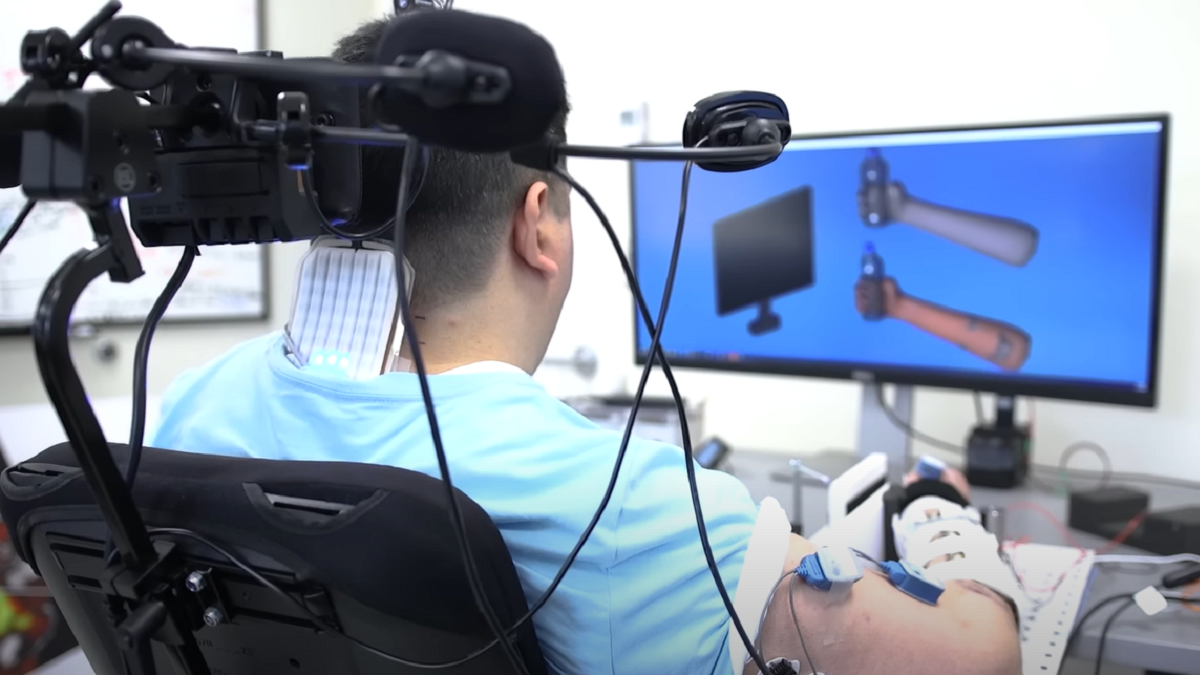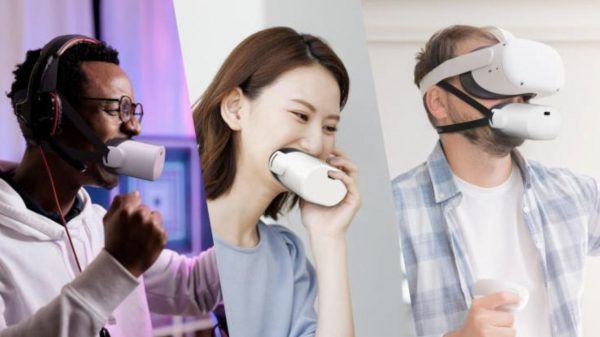As part of a unique clinical trial, researchers, surgeons and engineers have successfully performed a double neural bypass to restore feeling in a man with quadriplegia. Researchers from Northwell Health’s Feinstein Institutes for Medical Research developed AI algorithms to relink the man’s brain, body and spinal cord. Via a microchip implant, the double neural bypass restores movement and sensation in the patient’s hand by creating an electronic bridge.
Though the 15-hour open-brain surgery occurred on March 9, 2023, the research team waited four months to announce the groundbreaking success. The patient, Keith Thomas of Massapequa, NY, became paralysed from the chest down after a diving accident in 2020. Keith already sees lasting improvements in his arm and wrist outside laboratory settings.
“There was a time that I didn’t know if I was even going to live or if I wanted to, frankly. And now, I can feel the touch of someone holding my hand. It’s overwhelming,” said Mr Thomas.
Using MRIs to map the brain
Before the surgery, researchers and clinicians from Feinstein Institutes took several months to map out Mr Thomas’ brain using functional MRIs to determine which areas are responsible for arm movement and touch sensation in his hand. At times during the surgery, Mr Thomas was awake and giving real-time feedback about the sensations he was feeling in his hands.
“Because we had Keith’s images and he was talking to us during parts of his surgery, we knew exactly where to place the brain implants,” said Dr Mehta, director of Northwell’s Laboratory for Human Brain Mapping, Feinstein Institutes’ Institute of Bioelectronic Medicine and the surgeon who performed the implant.
In the lab, Mr Thomas is connected to a computer through two ports protruding from his head—the computer then uses AI to interpret his intentions and translate them into actions. Mr. Thomas thinks about the action he wants to take and a signal is sent to a computer. The computer then sends signals to non-invasive electrode patches on his spine and hand muscles. Sensors on his fingertips and palm send sensory and touch information to the sensory area of his brain.
While in the lab, Keith can now feel when his sister holds his hand and can move his arm. The researchers hope that through the double neural bypass, new connections between the brain, body and spine will form, allowing people with paralysis to recover full use of their bodies.
“Millions of people live with paralysis and loss of feeling, with limited options available to improve their condition, “says Kevin J. Tracey, MD, president and Feinstein Institutes CEO. “Prof. Bouton and his team are committed to advancing new bioelectronic technologies and open new clinical paths to restore movement and sensation.”
Jack Brassell is a freelance journalist and aspiring novelist. Jack is a self-proclaimed nerd with a lifelong passion for storytelling. As an author, Jack writes mostly horror and young adult fantasy. Also an avid gamer, she works as the lead news editor at Hardcore Droid. When she isn't writing or playing games, she can often be found binge-watching Parks & Rec or The Office, proudly considering herself to be a cross between Leslie Knope and Pam Beasley.






































